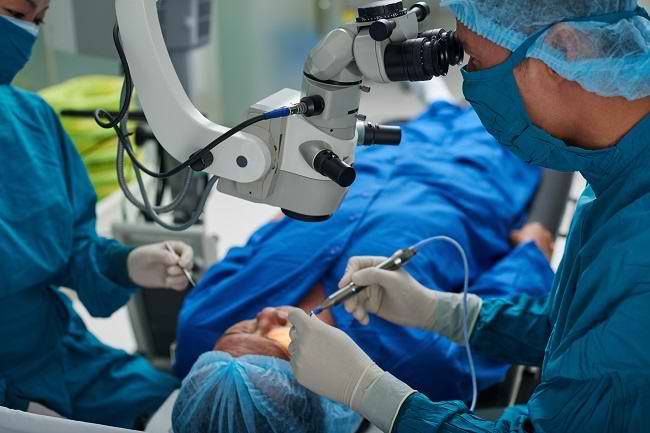If you have diabetes, especially type 2 diabetes, be aware of a complication of diabetes called nonketotic hyperosmolar hyperglycemic syndrome. The reason is, this condition can be fatal if not treated immediately.
Nonketotic hyperosmolar hyperglycemic syndrome (HHNK) is also known as hyperosmolar hyperglycemic syndrome is a condition that occurs when the blood sugar level in the body of a person with diabetes rises too high to far exceed the normal limit.

Blood sugar levels that increase dramatically due to HHNK syndrome will make the sufferer's body excrete a lot of fluid through urine to remove accumulated blood sugar. However, this amount of wasted body fluid can then increase the risk of dehydration.
When compared with other complications of diabetes, such as diabetic ketoacidosis, HHNK syndrome is actually relatively rare. Even so, HHNK syndrome has a high risk of causing serious health problems, such as seizures, coma, or even death.
Nonketotic Hyperosmolar Hyperglycemia Causes and Risk Factors
Nonketotic hyperosmolar hyperglycemic syndrome is a complication of diabetes that can occur when diabetes is not controlled or managed properly. Although more common in people with type 2 diabetes, HHNK syndrome can also occur in type 1 diabetes.
In addition, there are several other factors that can also cause hyperosmolar nonketotic hyperglycemic syndrome, namely:
- Infections, such as pneumonia or urinary tract infections
- Side effects of drugs, such as diuretics, corticosteroids, and anticonvulsants
- Certain diseases, such as heart failure and kidney disease
- Age over 65 years old
Recognize the Symptoms of Nonketotic Hyperosmolar Hyperglycemia
When exposed to hyperosmolar nonketotic hyperglycemic syndrome, diabetics can experience a very drastic increase in blood sugar up to more than 600 mg/dl. Whereas normal blood sugar levels ranged from 70-90 mg/dl when fasting and less than 140 mg/dl after eating.
In addition, HHNK syndrome can also cause sufferers to experience the following symptoms:
- Heavy thirst
- Frequent urination
- Visual disturbance
- Weak
- hallucination
- Nauseous
- dry mouth
- Skin feels warm and dry
- Fever
- Weakness in one limb
- Dazed or often sleepy
If you have diabetes and feel some of the symptoms above, immediately see a doctor for medical help.
To determine whether the symptoms you are experiencing are caused by HHNK syndrome or not, the doctor will perform a physical examination and supporting examinations in the form of blood tests and urine tests to assess your blood sugar levels. Next, the doctor will determine the appropriate treatment steps according to the diagnosis.
Nonketotic Hyperosmolar Hyperglycemia Management
Nonketotic hyperosmolar hyperglycemic syndrome is an emergency condition that requires immediate medical attention. If left untreated, this syndrome can lead to various serious health problems, such as seizures, heart attacks, strokes, coma, or even death.
To treat nonketotic hyperosmolar hyperglycemic syndrome in patients, doctors can provide the following treatments:
Administration of fluids by infusion
To overcome dehydration and meet the patient's needs for body fluids that are wasted a lot due to HHNK syndrome, doctors can provide infusion therapy. The choice of infusion fluid that is usually used to treat HHNK syndrome is a saline solution (sterile salt water) plus electrolyte solutions.
Insulin Therapy
To lower blood sugar levels of patients with HHNK syndrome that jump too high, doctors can give insulin therapy by injection. This insulin can be given by injection in an infusion or by injection into fat tissue.
Antibiotics
The doctor will give antibiotics by injection if the patient's HHNK syndrome appears along with a bacterial infection. Antibiotic drugs are also usually given to prevent severe bacterial infections or dangerous sepsis.
In addition to the above treatment, the doctor may also provide oxygen therapy and respiratory support through a ventilator in patients with nonketotic hyperosmolar hyperglycemic syndrome who experience decreased consciousness or coma.
At the hospital, patients with HHNK syndrome will usually be treated in the ICU until their condition is stable and improves.
To prevent the occurrence of hyperosmolar nonketotic hyperglycemic syndrome, the best way that can be done by diabetics is to control their blood sugar levels. Therefore, if you have diabetes, you need to get treatment and undergo regular health checks to the doctor.
If your diabetes is not controlled or has already caused some of the symptoms of hyperosmolar nonketotic hyperglycemic syndrome previously mentioned, seek medical attention immediately to a doctor at the nearest hospital so that this condition does not get worse and can be treated as soon as possible.









